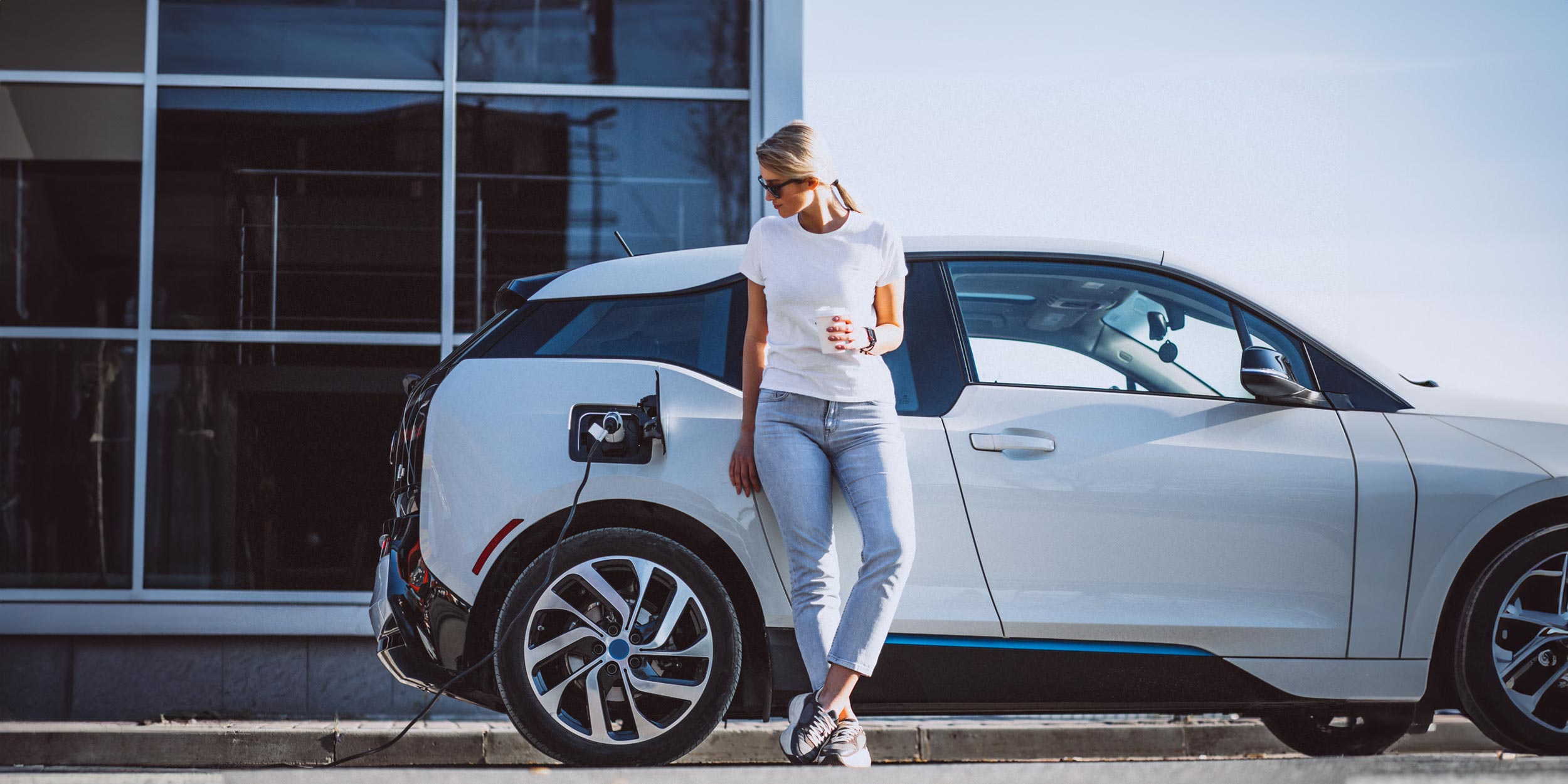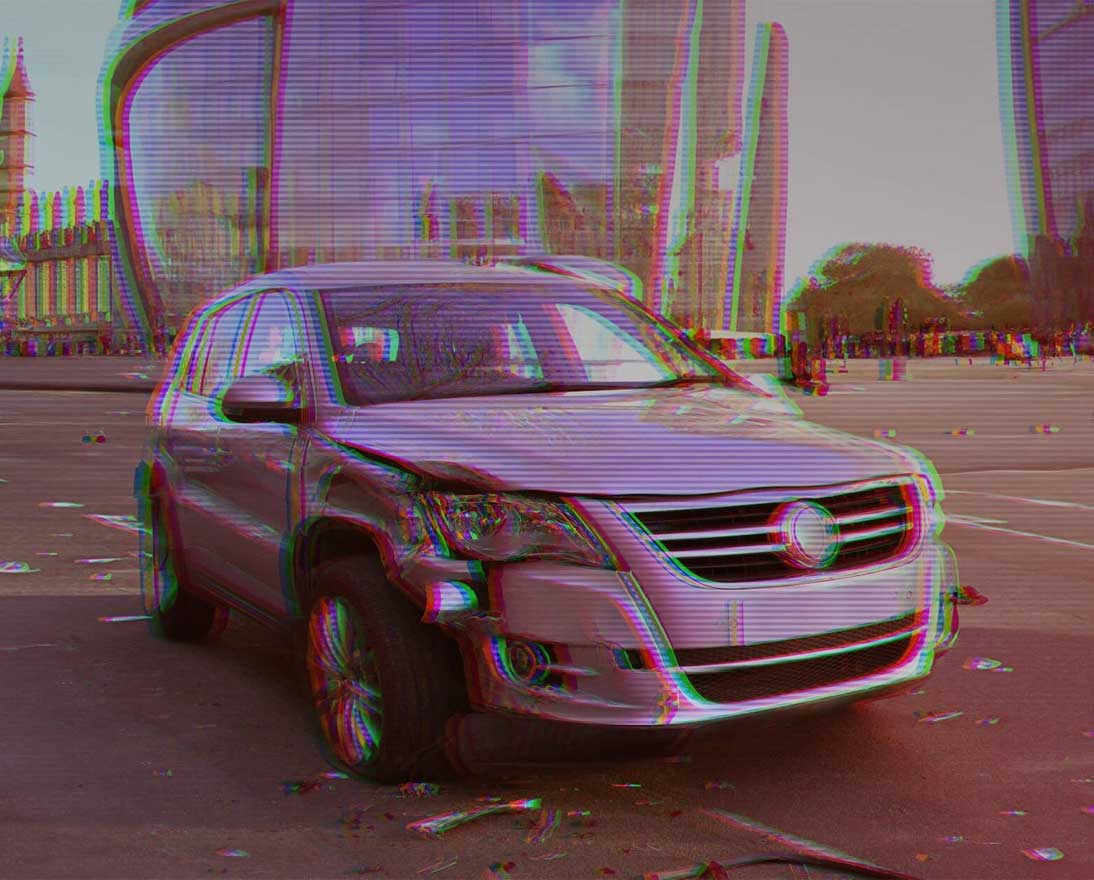EV owners and insurers adjust to a silent power revolution
Net-zero transitionArticleJanuary 8, 202510 min read
At Zurich, we’re supporting ways to make driving better for the planet. And possibly even more fun, which includes being there for owners of electric vehicles (EVs), as well as people who might be considering switching to one.
Globally, more than one in four vehicles on the road will be electric by 2035, according to an estimate by the International Energy Association. Some say it will happen sooner, others say adopting EVs on such a large scale will take longer. But there’s little argument that EVs are already well established, and by and large, better for the planet.
Are you wondering if you should get an EV? Or are you an existing owner? Have questions? Your insurer might be one place to start. With EV ownership on the rise, Zurich Insurance Group (Zurich) is supporting new and existing EV owners, as well as those contemplating making the leap to an EV.
Zurich today is among the world’s largest motor insurers. It began providing liability insurance for drivers of electric cars well over a century ago, when rates were still based on horses and buggies. More recently Zurich has been providing EV cover as one way to reduce our impact on the environment.
Zurich was among the first-movers to introduce modern EV insurance in Europe, starting with a customized EV insurance proposition in Ireland in 2011. Over the past decade, Zurich also became an early EV insurance provider in several European countries, including in its home country of Switzerland.
In addition, Zurich also has set up preferred insurance agreements with many vehicle manufacturers in local markets where it does business. Zurich Switzerland has acted as Tesla’s preferred insurance provider in Switzerland since 2016. In 2024, Zurich Australia announced that it also has agreed with Tesla to be the preferred insurance provider for the manufacturer’s Model 3 and Model Y.
“Zurich recognizes that electrifying the fleet is an important aspect of Australia’s transition to net zero, and insurance is an important facilitator of this,” says Alex Morgan, Head of General Insurance, Zurich Australia & New Zealand. “Zurich wants to support this journey by enabling people to make the switch to EVs with the confidence and protection they need.”
Adjusting to EVs
According to Janick Jay Theodorus Janssen, Head Key Account Management at Zurich Switzerland, the frequency of claims might be slightly higher for new EV owners in the first months of ownership, due to unfamiliarity with the driving experience.
For those contemplating making the switch from a traditional internal combustion engine to an EV, it is a good idea to first familiarize yourself with the basics before you get behind the wheel. “We assume,” says Janssen, “that if you drive an EV car for the first time, you’re not hearing the engine starting. You don’t really hear anything. And as soon as you just touch the pedal a little bit, you experience full power. Some people might need to get used to this.”
An EV has fewer moving parts than a conventional internal combustion engine, so fewer things are likely to go wrong. That can also mean less maintenance: No clutch, no timing belt, no drive belts, no fuel filter. Also, there’s no need to change the oil. Add to that list the fact that an EV has no air filter for the engine, and no spark plugs, nor an exhaust system or catalytic converter.
Batteries
High-voltage batteries are among the most expensive EV components, according to one Zurich study. A new owner is advised to read the fine print regarding warranties.
EV batteries are comprised of modules – for example, a dozen – and each module might contain, depending on the vehicle, two dozen cells. If a single cell’s storage capacity is reduced, this will have only a minimal impact on battery range. But if a cell is damaged, the whole module needs to be replaced. However, it may be possible to replace just the module, depending on the vehicle’s manufacturer, rather than the whole battery, says Martin Knobloch, deputy leader for a group of 11 specialists under team leader Mario de Vree in Zurich Germany’s motor claims team.
It's also worth noting that battery prices have come down in recent years, he adds. And while batteries tend to make EVs heavier than comparable internal combustion cars, EV tires are made to handle the weight. With an internal-combustion-engine vehicle, braking energy is transformed to heat. For EVs, the energy released during braking can be recovered and used to recharge the battery thanks to recuperation, or ‘regenerative braking.’ This boosts efficiency and can increase EV range by 22%. And, in addition, the brake discs and brake pads on an EV experience less wear and tear, hence lower costs for repair and service, and this also reduces emissions of fine particles caused by brake friction.
In line with Zurich’s plan to reach net zero for its own operations by 2030, including by eliminating pure internal combustion engines from its fleet, Zurich Germany began ordering only hybrid and electric vehicles for its staff fleet starting in 2021. According to those familiar with the business, Zurich Germany’s own first-hand experience with EVs also gives it an edge in supporting customers.
Ways we support EV owners
Depending on the country, Zurich’s businesses provide different types of EV cover, including things that can make a big difference to customers, whether commercial or private. For example, in the UK, in 2022, Zurich UK introduced a new small fleet cover for EVs, including offering ‘like-for-like’ EV replacement when customers use one of its approved repair networks. In Asia, insurance and takaful (Shariah-compliant) operator Zurich Malaysia recently announced a collaboration with Gentari Green Mobility Sdn Bhd to explore solutions related to sustainable lifestyle, including services aimed at easing the switch to EVs among its customers.
In Switzerland, where in 2023, one in five new cars sold was an EV, Zurich Switzerland already began offering an ‘eco bonus’ for vehicles powered by alternative fuels over a decade ago. It introduced cover for high-voltage EV batteries, charging stations and EV charging cards in 2020. That was followed in 2022 with introduction of the ‘Z Volt’ app, which lets EV drivers charge at more than 3,700 affiliated charging stations in Switzerland, and 300,000 charging points throughout Europe.
Converted skeptic
Charging infrastructure may be one reason why some people are wary of buying an EV. The European Automobile Manufacturers’ Association (founded under the French name l’Association des Constructeurs Européens d’Automobiles, or ‘ACEA’) estimated there were 632,423 charging points available across the EU at the end of 2023, and the number grew by about 153,000 from 2022. While that sounds like a lot, if the pace of EV sales develops as they anticipate, the ACEA estimates that as many as 8.8 million chargers will be needed in the EU by 2030. In other words, the installation pace will have to increase.
Despite concerns about charging and range, first-hand EV experience might prove less problematic than anticipated.
“I was skeptical about EVs at first,” says Alessandro Sisera, a key account manager in Zurich Switzerland. As the owner of a new high-end E-SUV, he has agreed to take the writer of this article for a spin around town. As I sit looking at the electronic dashboard in Alessandro’s EV, I am disoriented. I see precisely … nothing. It is just a dark screen. There are no clues as to what anything might be, in terms of radios, or air conditioning or heating. There is definitely no cigarette lighter, as I recall from my early driving days. Then Alessandro presses a button and the car turns on. Magic. The screen comes to life, showing our position thanks to six cameras providing a 360-degree view of everything around the vehicle. And we move. It is really silent.
In fact, Alessandro first considered buying something with a diesel engine. “But since I’ve had this —” he speaks as we roll out of the garage, where his vehicle has been charging — “I’m really convinced it’s both economical, and a pleasure to drive.”
Alessandro says he gets about 600 kilometers (370 miles) per charge, which was enough to take him and his family from Zurich to Naples, with only two stops along the way. In the end they arrived at their destination with power to spare. His SUV takes about 20 minutes to load.
The future
Globally, some manufacturers are looking at the feasibility of introducing high-pressure die casting manufacturing methods for large sections of vehicles, including EVs, which could potentially reduce still further the number of parts needed. Wireless charging, still in its infancy, doubtless offers many advantages and could make it much easier to charge in the years ahead. And in Asia, some battery makers envision a new generation of ‘superfast’ charging cells that could charge an EV in about five minutes.
Hydrogen might also become a practical solution for providing electrical power to vehicles, helping to further reduce emissions. To support hydrogen power development, in 2024, Zurich and Aon launched what they describe as a “pioneering clean energy insurance facility,” which will provide comprehensive cover globally for blue and green hydrogen projects.
And, what about EV owners who, despite a more amenable environment, might still pine for the good old days when noise meant power under the hood? Fear not. If you feel nostalgic for the roar of a combustion engine, you can still opt for a system made for EVs that broadcasts fake combustion engine noise through loudspeakers, and you might even augment that with a fake EV manual transmission. But unless you are racing for pink slips, maybe it’s better to stick with standard EV kit, and learn to enjoy quiet, low-emission mobility.
Tips for EV owners
- Familiarize yourself with your battery warranty.
- When traveling longer distances, think ahead. Your EV might be able to alert you to the next available charging station. If not, plan before you go. And don’t forget your cable.
- If you’ve invested in a high-powered EV, get used to the feeling of ‘immediate maximum torque.’ The energy goes straight to the wheels, and you might be moving before you realize it.
- Talk to your insurer about preferred garages for EV repairs. Save the heartache and go to knowledgeable professionals.
- Know your vehicle’s charging specifics. Know your charging speed. If your EV charges slowly, don’t monopolize the fast charger stations. You won’t charge any faster.



